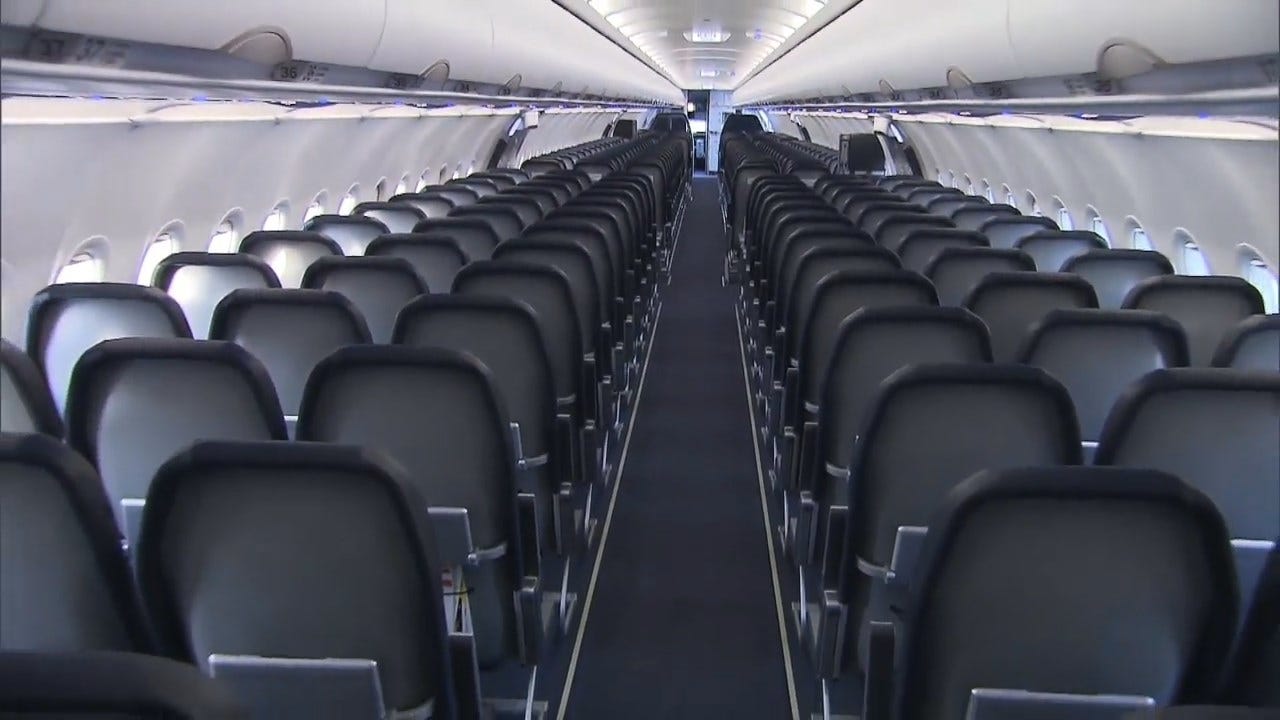FAA Tests Plane Seat Size Safety, But Some Call Experiments 'A Sham'
As airlines reduce seat sizes and pack more people onto planes, the Federal Aviation Administration has started tests aimed at setting a minimum standard for seats and the space between rows to ensure safety. But some say the tests are nothing but a sham.Tuesday, November 26th 2019, 12:57 pm
As airlines reduce seat sizes and pack more people onto planes, the Federal Aviation Administration has started tests aimed at setting a minimum standard for seats and the space between rows to ensure safety. But some say the tests are "nothing but a sham."
It took an order from Congress to get the FAA to do the testing and it's the first time it has looked at seat size, specifically, CBS News correspondent Kris Van Cleave reports. In a simulated cabin that can be filled with smoke and plunged into darkness, the FAA will try to determine at what point the size of seats and space between rows becomes a hazard to evacuating an airplane quickly.
"Is there an ideal amount of time to get everybody off an airplane?" Van Cleave asked.
"As quick as possible if there is an emergency," said Stacey Zinke-McKee with the FAA. "The queuing is usually not for people to get into the aisles, but actually to get out of the aircraft."
"Flyers might think their seats are too close, but that may not have any impact on safety at all?" Van Cleave asked.
"Correct. It might not, but that's the reason we're going to gather data," Zinke-McKee said.
When American Airlines Flight 383 had an engine catch fire on takeoff in Chicago in October 2016, it took more than two minutes to evacuate, in part because passengers grabbed their luggage. But, during the 12 days of FAA testing at an Oklahoma City facility, the 720 volunteer passengers won't have to deal with real life obstacles like bags, smoke, comfort animals or the dark, and the volunteers will be broken into groups of just 60. The smallest 737 seats at least double that.
Related: FAA Uses OKC Facility To Test Emergency Evacuations On Planes
The FAA said it designed the tests to focus solely on two variables: seat width and the space between rows, known as seat pitch.
"These tests are going to be nothing but a sham," said John Breyault, who is from the National Consumers League. The organization and nine other groups sent a letter to Transportation Secretary Elaine Chao and FAA Administrator Steve Dickson criticizing the seat testing.
"Consumers should not think for a minute that these tests are being done in a way that would accurately represent what could happen in an emergency evacuation," Breyault said.
He worries airlines will use the FAA's findings to further reduce space and add more seats. Airline seat width is down as much as four inches over the last 30 years to as little as 16 inches wide. And seat pitch has shrunk from about 35 inches to 31 inches and in some cases as little as 28 inches.
Spirit Airlines says seat size is more about the amount of usable space. Next month they're launching redesigned memory foam seats with a curved back for better legroom at 28 inches apart. But CEO Ted Christie says you'll have as much room as seats with 30 inches of pitch.
"Do you have any concerns about this not being enough space to safely evacuate a plane quickly, for people to be comfortable?" Van Cleave asked.
"None at all. You know, there's been many tests done to ensure that these seats and our configuration meets with safety requirements," Christie said. "While they are closer together than a first-class product, they've been validated to show that there's adequate space to egress the airplane."
The Spirit seats are noticeably more comfortable than the ones they are replacing.
The FAA testing should be complete by the end of the year with a report coming next summer. From there, it goes to an advisory committee that will make recommendations to the FAA about regulations. So any new rules are not expected for at least a couple of years.
More Like This
November 26th, 2019
November 13th, 2024
October 28th, 2024
October 17th, 2024
Top Headlines
December 26th, 2024
December 26th, 2024
December 26th, 2024
December 26th, 2024










